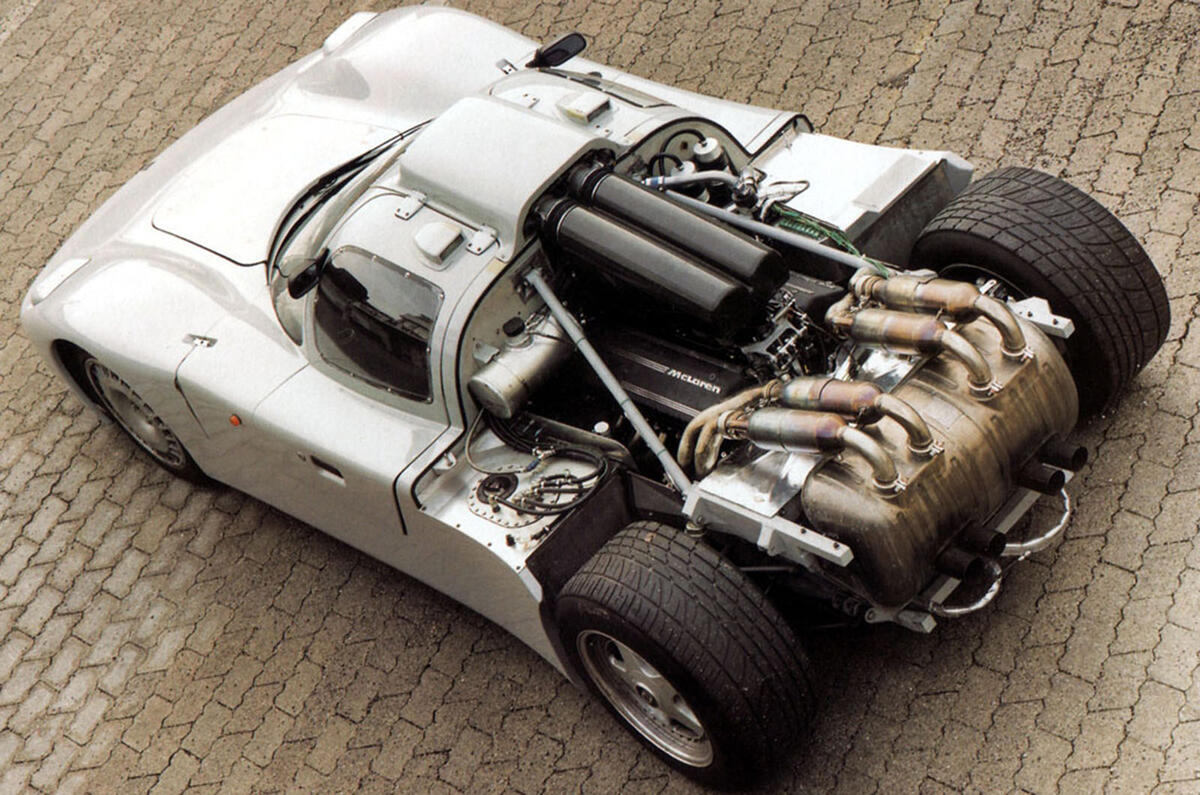When McLaren and BMW wanted a vehicle to use as a test bed during the development the McLaren F1, they went to Ultima, a well-known self-build car maker from the Midlands, and bought two of its cars.
One was modified to test the gearbox and central driving position. The other had BMW’s V12 shoehorned into its middle. Dubbed Edward and Albert, they are arguably the best-known test mules in motordom.
Less known is that only a few years ago, McLaren was at it again. During development of the MP4-12C, McLaren didn’t have bodywork from an existing model with which to clothe mules like it does today. So its engineers were inventive: before they knew what engine they might use, they even dropped a huge-capacity, naturally aspirated engine into a Ferrari 360. It served its purpose. And completely ruined its handling.
And then they reprised an old idea: the Ultima idea. By this time, McLaren knew it wanted to use its twin-turbo V8 and that the MP4-12C would have its innovative linked suspension. So, knowing how long and stiff the chassis would have to be, McLaren’s engineers bought an Ultima chassis and set about making it the same spec.
The Ultima is shorter than the McLaren, so the chassis was lengthened and then put on a rig to test how stiff it was. Basically, this involves attaching a massive bar across each axle, holding one rigid and applying a large force to the other, to see how much the chassis twists between front and rear.
McLaren wanted the chassis to bend by 1deg if its engineers applied 25,000Nm of force. The Ultima bent by 1deg at less than a tenth of that.
Which is when McLaren’s engineers adopted a somewhat old-fashioned technique. They triangulated the chassis with masking tape, twisted it again, noted where the tape went slack, welded a bar across it and repeated the process until they were happy.
Then they applied some of the Ultima bodywork, more or less. It, too, had to be lengthened and the rear clamshell changed to hinge at the front, rather than the rear. Bruce McLaren’s death at Goodwood in 1970 was caused by a rear clamshell flying open, and no McLaren will again have a rear-hinged body.
So if you did spot an Ultima in Surrey around half a decade ago, there’s every chance it might not have been an Ultima at all.
Today, of course, McLaren can place its own bodywork over any of its chassis. So when you see a spy photo of what looks like a disguised 650S spotted while testing, underneath it could be a 650S, a 675LT or even a P13. It’s less interesting for the spotter and it confuses spy photographers completely. But it means less welding.







Join the debate
Add your comment
Missed opportunity